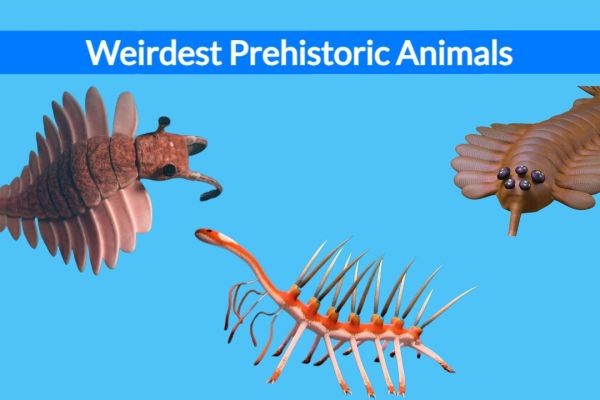Begin your journey to identifying iconic Ice Age animals by discovering their unique traits and adaptations that set them apart from modern species.
08/13/24 • 95 Views
To identify iconic Ice Age animals, look for specific traits like thick fur, large body sizes, and specialized teeth. Woolly mammoths had long, curved tusks and insulating fat layers. Giant Ground Sloths were powerful herbivores with slow metabolisms, adapted to browsing. Sabre Tooth Cats featured distinctively long canines for hunting large prey. Dire Wolves had robust builds and pack-hunting strategies. Irish Elk were notable for their massive antlers and towering stature. Each species displayed unique adaptations for surviving cold climates and predation pressures. Understanding these characteristics can help you recognize these fascinating prehistoric creatures better.
Key Takeaways
- Look for thick fur and a layer of fat, which provide insulation in cold climates.
- Identify large body sizes that help with thermal inertia and survival in harsh conditions.
- Note specialized teeth structures, such as ridged molars or long canines, indicating their diet and hunting strategies.
- Observe unique physical features like the woolly mammoth's curved tusks or the Irish elk's enormous antlers.
- Check for evidence of social behaviors, such as pack hunting or herd living, which enhance survival and hunting efficiency.
Characteristics of Ice Age Animals
Ice Age animals exhibited several adaptations for surviving in cold climates, such as thick fur, large body sizes, and specialized teeth for grazing or hunting. One of the most iconic examples is the woolly mammoth, which had long, shaggy fur and a layer of fat under its skin to insulate against frigid temperatures. Its large body size also helped reduce heat loss, a principle known as Bergmann's rule. The woolly mammoth's molars were ridged, enabling it to grind tough, frozen vegetation effectively.
Similarly, the giant ground sloth showcased remarkable adaptations. These massive creatures, some species reaching up to 20 feet in length—had thick fur coats that protected them from the cold. Their size not only provided thermal inertia but also made them less vulnerable to predators. Additionally, the giant ground sloth had large, curved claws suited for pulling down branches and digging for roots, which were essential food sources.
Both woolly mammoths and giant ground sloths had evolved to make the most of their harsh environments. These traits highlight the remarkable ways Ice Age megafauna adapted to survive, providing us with fascinating insights into ancient ecosystems and the challenges these animals faced.
Woolly Mammoths
Among the most recognizable megafauna of the Ice Age, woolly mammoths possessed remarkable adaptations that enabled them to thrive in frigid environments. Their distinctive features included long, curved tusks and a shaggy coat, which provided essential insulation against the cold. Beneath their fur, a thick layer of fat further protected them from harsh, icy conditions.
Woolly mammoths primarily grazed on grasses and sedges, using their tusks to clear snow and ice. Fossil evidence indicates that they lived in herds, exhibiting complex social structures akin to those of modern elephants. This social behavior likely played an important role in their survival during the challenging Ice Age climate.
Here's a quick comparison to help you understand the key aspects of woolly mammoths better:
| Feature | Description |
|---|---|
| Fur and Fat Layer | Thick coats and subcutaneous fat for insulation |
| Tusks | Long, curved, used for foraging through snow and ice |
| Diet | Primarily grasses and sedges |
| Social Structure | Herds with complex interactions, similar to modern elephants |
| Extinction Factors | Combination of climate change and human hunting pressures |
These majestic creatures' extinction around 10,000 years ago is attributed to a mix of climate change and human hunting, showcasing the delicate balance required for their survival.
Giant Ground Sloth
You might be surprised to learn that Giant Ground Sloths, some of which grew as large as modern elephants, were formidable herbivores with long, powerful limbs and sharp claws for digging and defense. These massive creatures roamed the forests and grasslands of North and South America during the Ice Age, using their impressive physical attributes to forage for vegetation. Their slow metabolism meant they spent much of their time browsing for food, making them an integral part of their ecosystems.
Fossils of these ground sloths provide valuable insights into their anatomy and behavior. Their large size and unique adaptations suggest they were well-equipped to handle the challenges of their environment. However, despite their formidable nature, Giant Ground Sloths eventually faced extinction. Scientific evidence points to a combination of climate change and human hunting as key factors.
As the Ice Age came to an end, rising temperatures and shifting habitats likely reduced the availability of their preferred foods. Concurrently, early humans may have hunted them, further contributing to their decline. Understanding the life and eventual extinction of Giant Ground Sloths offers a window into the past, highlighting the complex interplay between climate change and human impact on megafauna.
Sabre Tooth Cat
You'll find the Sabre Tooth Cat's distinctive teeth structure fascinating, as their long, curved canines were key for taking down large prey. Examining fossil discoveries reveals that these cats had specific hunting strategies and diets, often preying on massive herbivores. Studies of fossil locations provide insights into their habitats and social behaviors, shedding light on their extinction causes.
Distinctive Teeth Structure
Sabre Tooth Cats, exemplified by species like Smilodon, boasted long, curved canine teeth up to 11 inches in length, meticulously designed for precision stabbing and slashing of their prey. These saber-toothed predators possessed a distinctive teeth structure that set them apart from other Ice Age animals. The elongated, razor-sharp canines weren't just for show; they played an important role in their hunting strategy.
Fossil evidence reveals that these teeth were fragile compared to modern big cats, suggesting they were specialized for quick, fatal bites rather than prolonged struggles. The curvature and size of the canines allowed Sabre Tooth Cats to deliver powerful, targeted attacks to key areas of large herbivores, such as the neck or underbelly. This precision reduced the risk of injury to the predator while ensuring an efficient kill.
Moreover, the distinctive tooth structure of Sabre Tooth Cats indicates their evolutionary adaptation to the Ice Age environment, where large prey like mammoths and bison roamed. This specialization in their dentition underscores their role as apex predators.
Hunting and Diet
While the Sabre Tooth Cat's formidable canines were essential for delivering lethal bites, fossil evidence indicates they likely hunted in packs to efficiently bring down large Ice Age prey like bison and mammoths. Pack hunting would have given them a strategic advantage, allowing them to tackle prey much larger than themselves. This behavior is inferred from fossilized remains found in North America, which show signs of cooperative hunting.
The Sabre Tooth Cat's diet primarily consisted of large herbivores. Their powerful forelimbs and robust bodies were well-suited for taking down these massive creatures. Once the prey was subdued, the Smilodon used its long, curved canines to deliver a precise killing bite, often targeting the throat to cause rapid blood loss.
Here's a visual representation of their hunting and diet characteristics:
| Aspect | Description | Evidence Source |
|---|---|---|
| Canine Size | Up to 11 inches | Fossil Analysis |
| Primary Prey | Bison, Mammoths | Fossilized Stomach Contents |
| Hunting Strategy | Pack Hunting | Fossil Sites in North America |
| Killing Technique | Throat Bite | Tooth Wear Patterns |
| Forelimb Strength | Extremely Powerful | Skeletal Fossils |
Fossil Discovery Locations
Understanding the Sabre Tooth Cat's hunting strategies and diet provides essential context for examining the specific locations where their fossils have been unearthed, such as the La Brea Tar Pits in California. The La Brea Tar Pits in Los Angeles are among the most significant fossil sites in the United States, yielding a wealth of Sabre Tooth Cat remains. These tar pits trapped numerous animals, creating a rich repository of well-preserved fossils from the Pleistocene epoch.
In addition to California, notable discoveries have been made in Florida and even as far south as Brazil, indicating a wide geographical range for these formidable predators. The United States boasts several key sites, but La Brea stands out due to its exceptional preservation conditions. The fossils found here reveal a lot about the Sabre Tooth Cat's anatomy and behavior, including their powerful jaws and iconic long, curved canine teeth, which were essential for hunting large prey like mammoths and bison.
These fossil sites not only provide physical evidence of the Sabre Tooth Cat's existence but also offer insights into the environmental conditions and ecosystems in which they thrived before their extinction at the end of the Pleistocene.
Dire Wolf
When examining the Dire Wolf, you'll notice its robust build and powerful jaws, which were perfectly adapted for hunting large prey. Its range extended across North and South America, thriving in a variety of habitats.
Physical Characteristics Overview
When considering the physical characteristics of the Dire Wolf (Canis dirus), it was distinguished by its robust build, featuring strong jaws and teeth designed for hunting large prey. These features made them comparable to other Ice Age predators like the short-faced cave bear to sheer power and predatory efficiency. The Dire Wolf's skull was particularly suited for delivering strong bites, allowing it to take down and process large herbivores.
Additionally, Dire Wolves had shorter legs relative to modern wolves. This anatomical trait likely enhanced their stability and strength during close-range confrontations with prey. This adaptation would have been particularly advantageous when hunting in dense forests or rugged terrain where agility was less critical than brute force.
Weighing around 130 pounds on average, Dire Wolves were formidable predators. Their physicality was further augmented by pack hunting behavior, evident from fossil evidence, which suggests they operated similarly to modern wolves. This social structure would have allowed them to tackle even larger prey, leveraging their collective strength and coordination. Understanding these physical characteristics provides a clear picture of how Dire Wolves dominated their ecosystems during the Pleistocene epoch.
Habitat and Range
Dire Wolves thrived across a vast range in North and South America, adapting to diverse habitats from the icy tundras of Canada to the temperate regions of Bolivia. This wide distribution indicates their remarkable adaptability to different environmental conditions during the Pleistocene epoch.
In North America, Dire Wolves roamed grasslands, forests, and even semi-arid regions, while in South America, they were found in diverse ecosystems ranging from mountainous areas to lowland plains. Fossil evidence supports their presence in various climatic zones, suggesting they could hunt and survive in both colder and warmer climates.
As the Ice Age progressed and eventually ended, shifting environments and climatic changes played a significant role in their habitat availability. At the end of the Ice Age, the ensuing warmer temperatures led to habitat changes that may have contributed to the Dire Wolf's extinction.
Moreover, the fossil record in South America reveals that Dire Wolves shared their range with other large predators, intensifying competition for food resources. This competition, combined with environmental shifts, likely stressed their populations further, ultimately leading to their disappearance from the fossil record. Understanding these habitat dynamics provides crucial insights into the life and eventual extinction of these iconic Ice Age predators.
Predatory Behavior Analysis
Given their adaptability to various habitats, understanding the predatory behavior of Canis dirus reveals insights into their role as apex predators during the Pleistocene. Dire Wolves were highly social animals, often forming packs of up to 30 individuals. This pack structure enabled them to hunt large prey such as bison and even mammoths, which were some of the largest animals that lived during the Ice Age. Their robust build and strong jaws equipped them with a bite force 29% stronger than that of modern gray wolves, allowing them to take down formidable prey.
Fossil evidence indicates that Dire Wolves had a wide distribution, making them one of the most common large predators in North America during that era. Their success as hunters was likely due to their cooperative hunting strategies and physical adaptations.
However, despite their impressive hunting prowess, Dire Wolves went extinct around 10,000 years ago. The reasons behind their extinction remain a subject of scientific inquiry, but it's hypothesized that competition with other predators and significant environmental changes played pivotal roles. Studying their predatory behavior provides valuable insights into the dynamics of Ice Age ecosystems and the factors that led to the demise of these iconic predators.
Irish Elk
The Irish Elk, also referred to as the Giant Deer, roamed across Europe and parts of Asia during the late Pleistocene epoch, boasting antlers that spanned up to 12 feet across. These immense antlers made the Irish Elk one of the most iconic and recognizable Ice Age animals. Approximately 7,700 years ago, this species likely faced extinction due to a combination of climate change and human hunting pressures.
Standing at around 6.9 feet tall at the shoulders, the Irish Elk was an imposing figure. Fossil evidence reveals that these creatures weren't confined to Ireland, despite their name. Instead, they had a broad range across various terrains in Europe and parts of Asia. The vast antler span wasn't just for show; it likely played a role in mating displays and possibly even in defense against predators.
You can identify the Irish Elk from its unique skeletal structure, particularly the wide, palmate antlers. These features distinguish it from other deer species of its time. Understanding the Irish Elk's physical characteristics and habitat can help you appreciate the complexities of Ice Age ecosystems and the challenges these majestic creatures face.
Conclusion
In your journey to identify iconic Ice Age animals, you'll discover the unique traits of woolly mammoths, giant ground sloths, sabre-tooth cats, dire wolves, and Irish elks. Each of these majestic creatures has left behind a fossilized legacy that tells a rich story of adaptation and survival. While they're no longer with us, their imprints on history remain. So, keep your eyes peeled and your mind sharp—these ancient wonders are just waiting to be uncovered.









